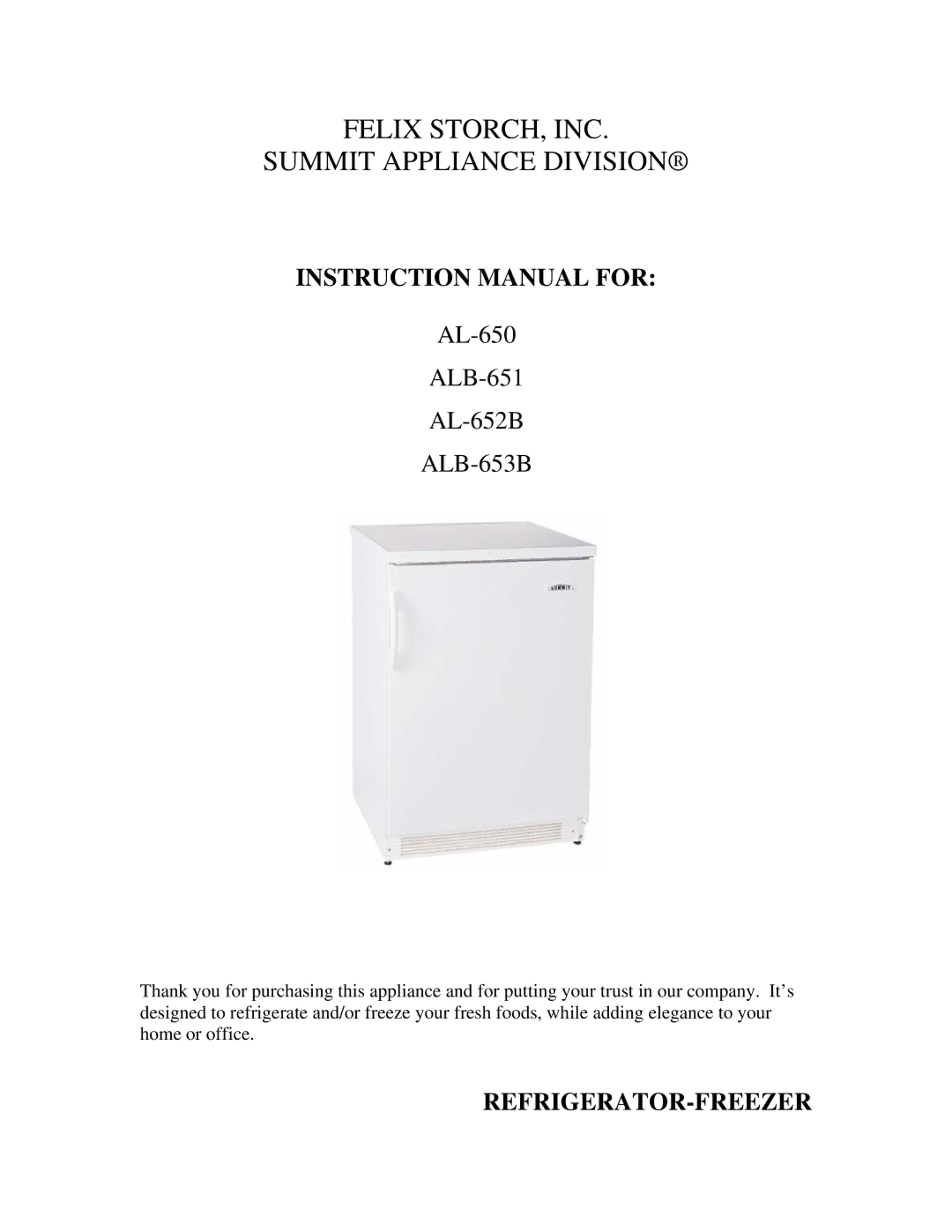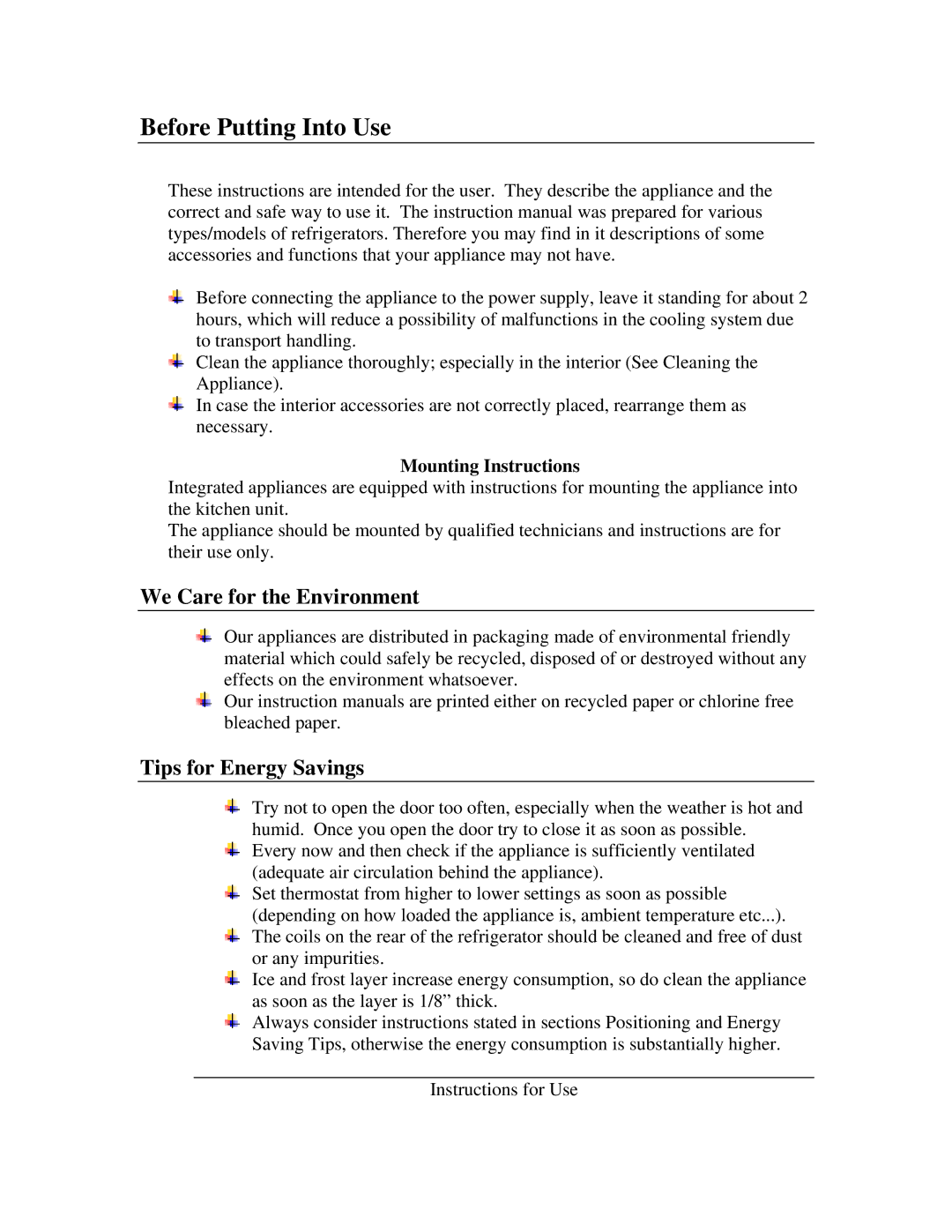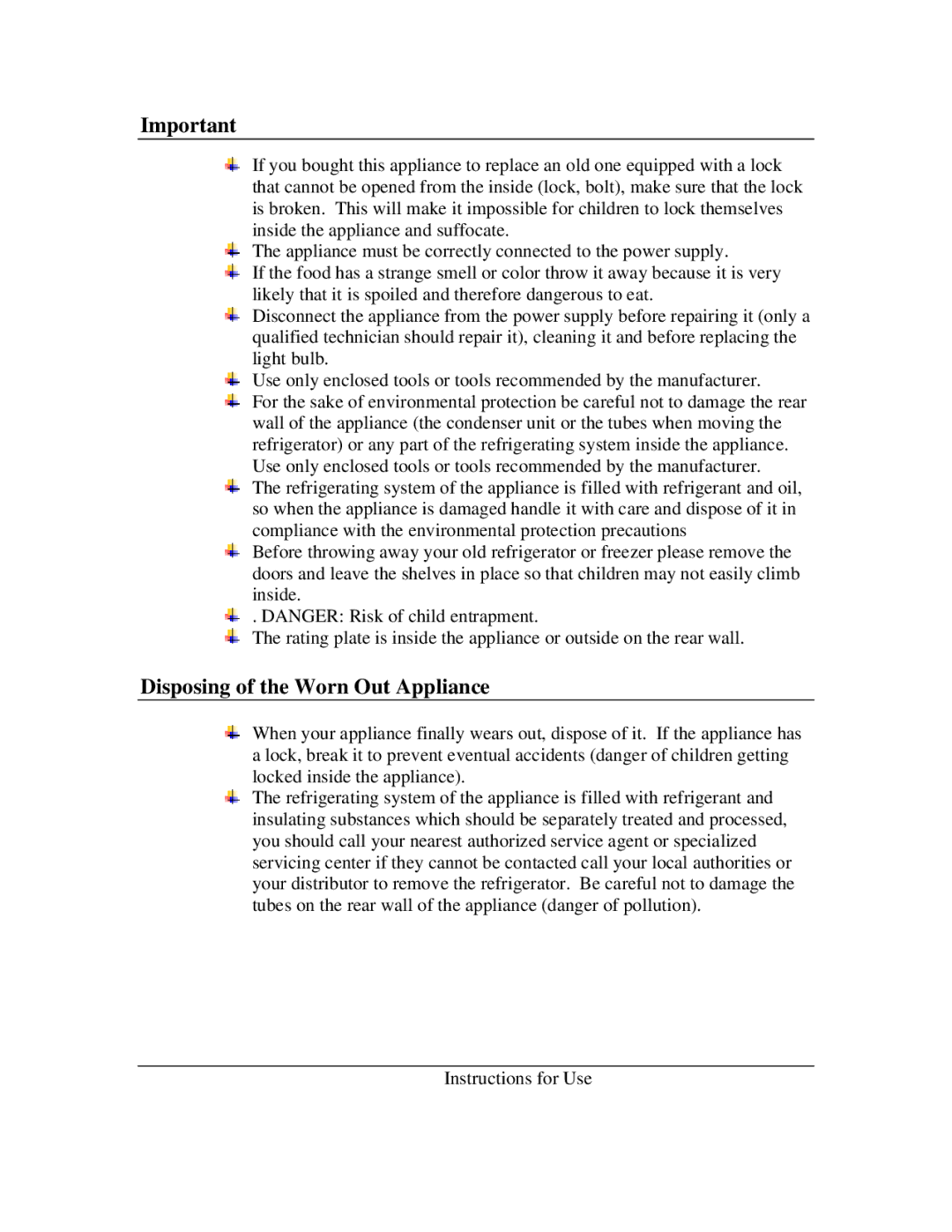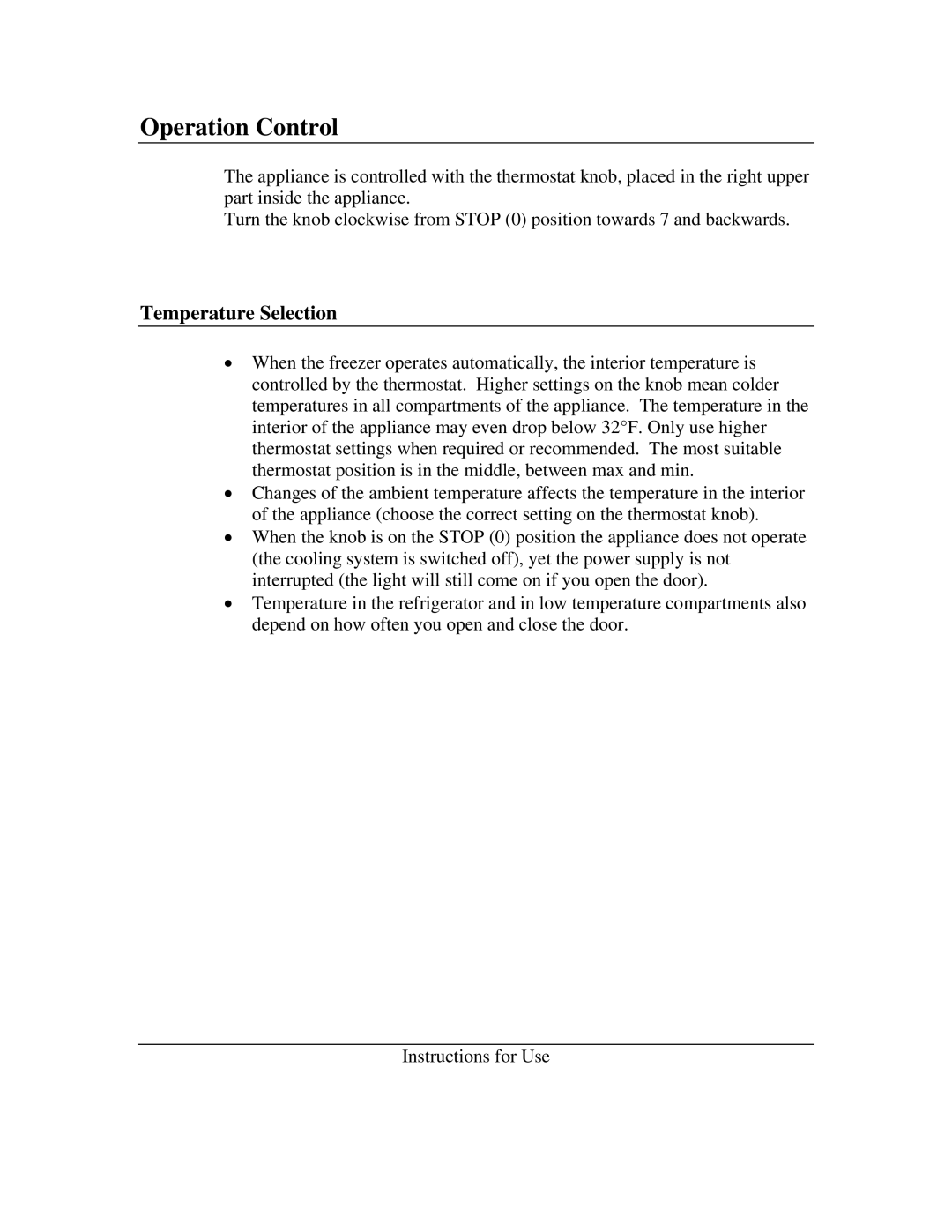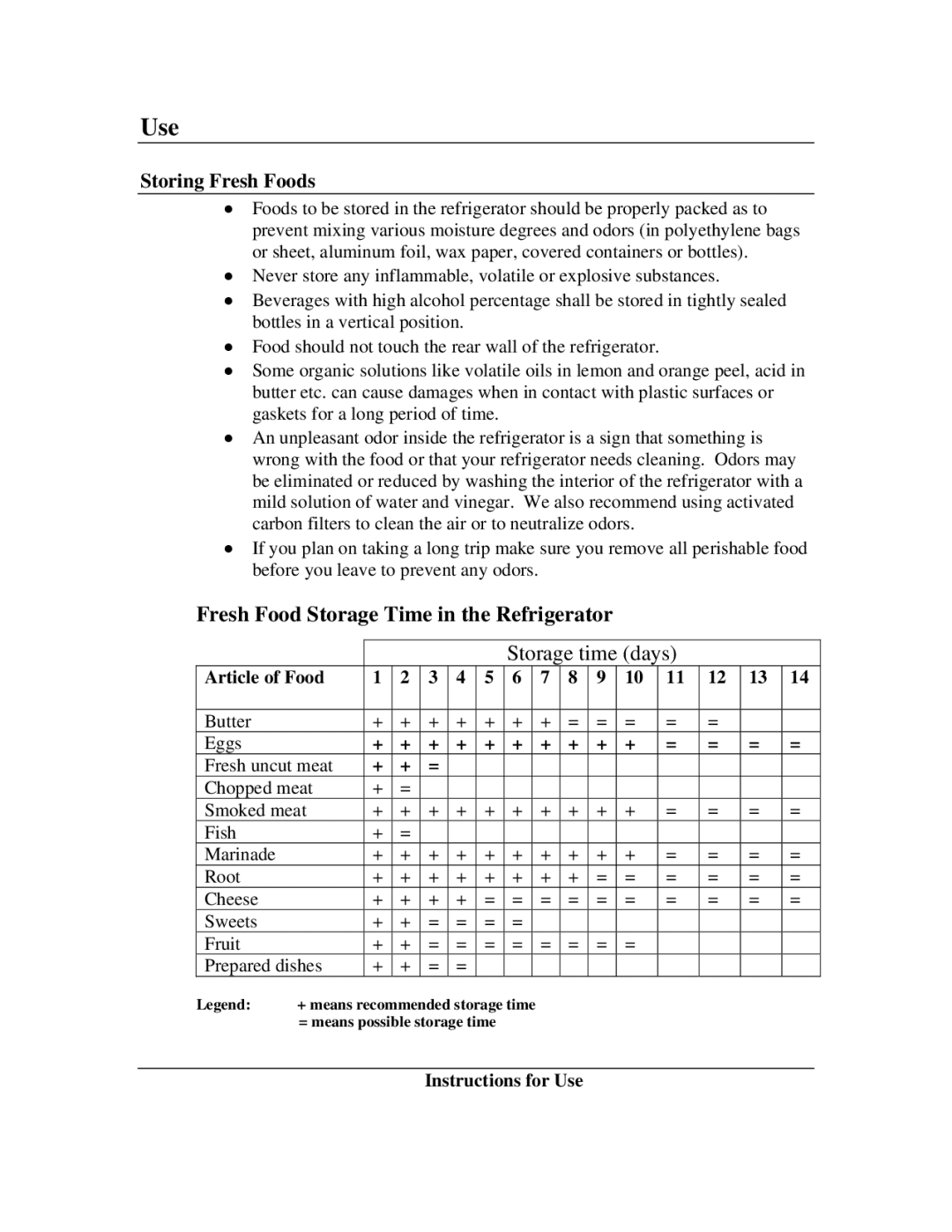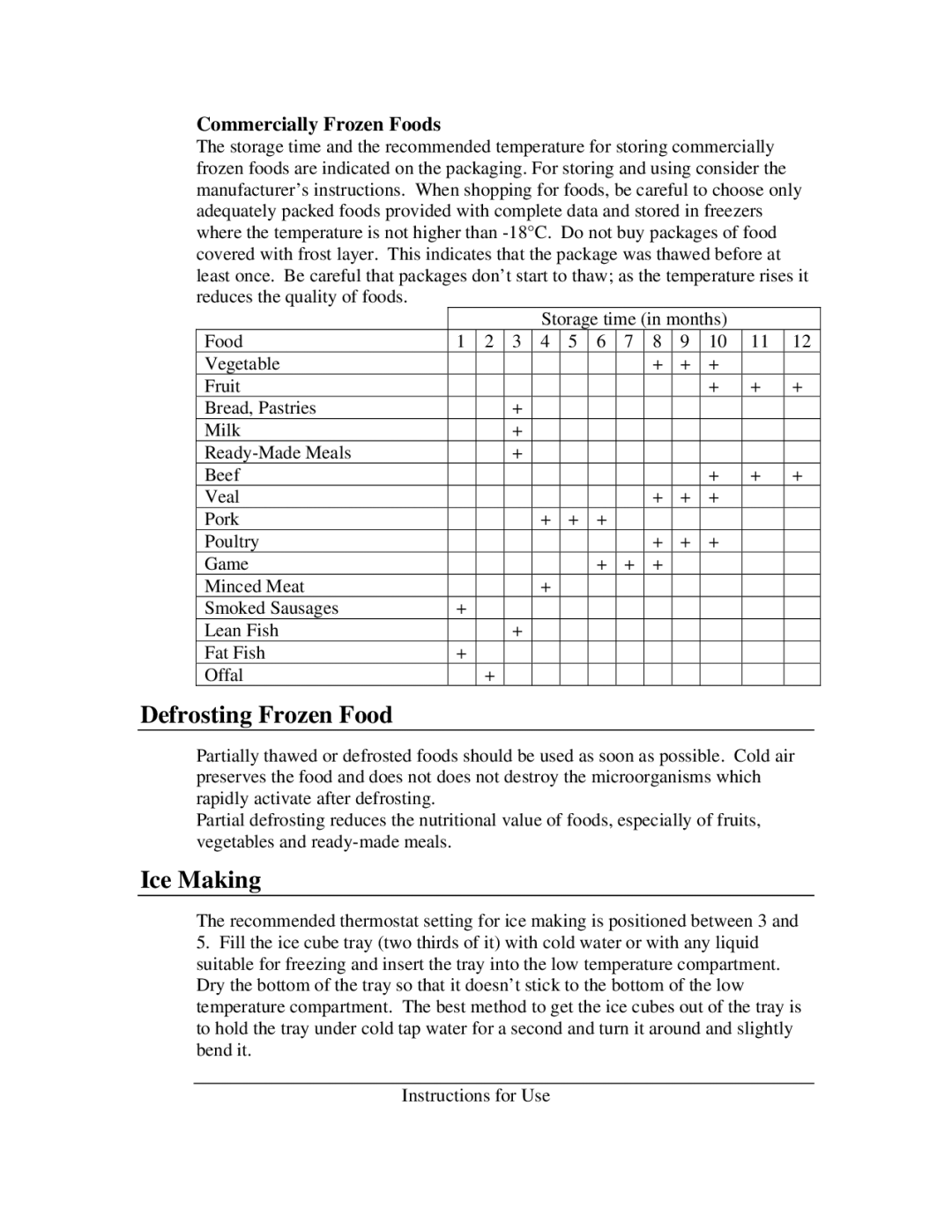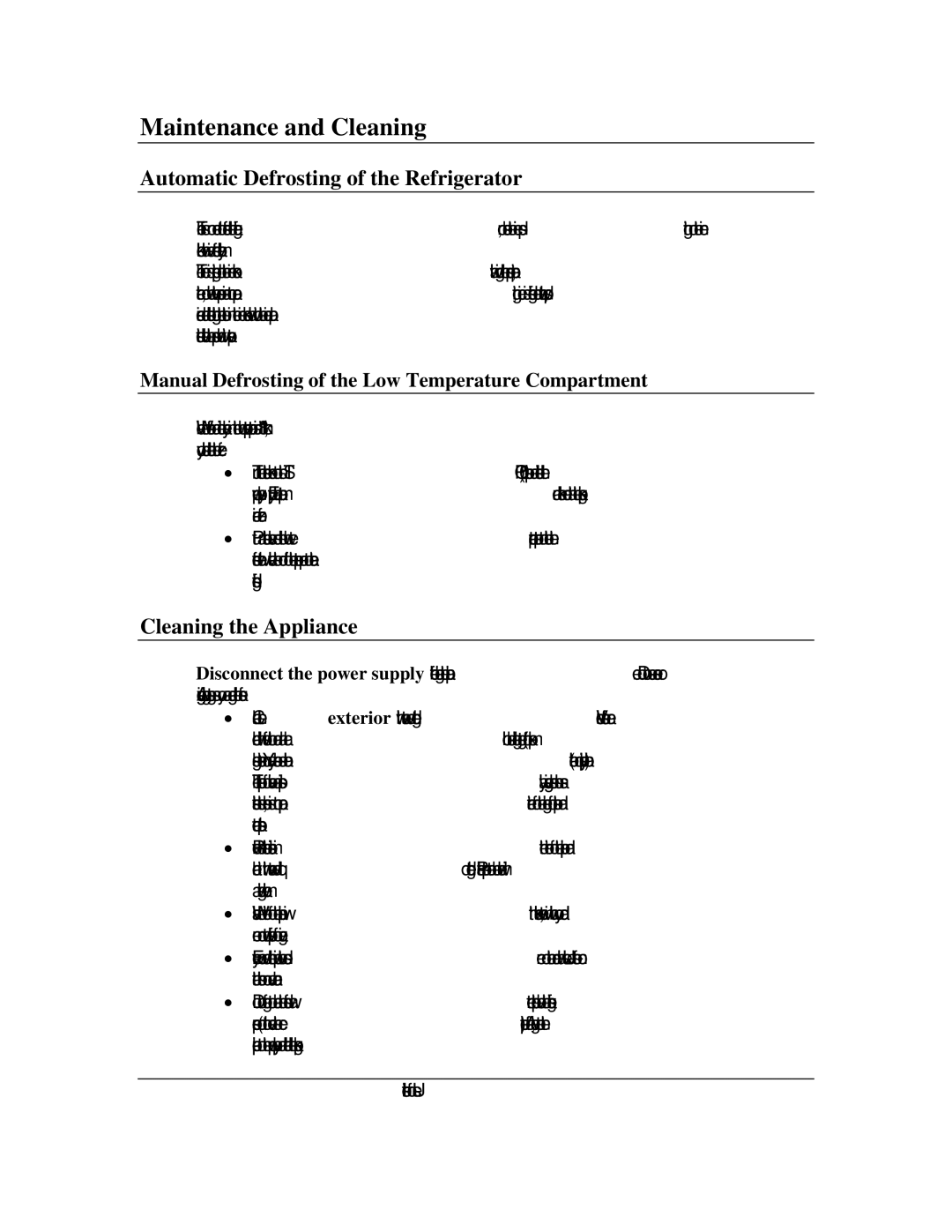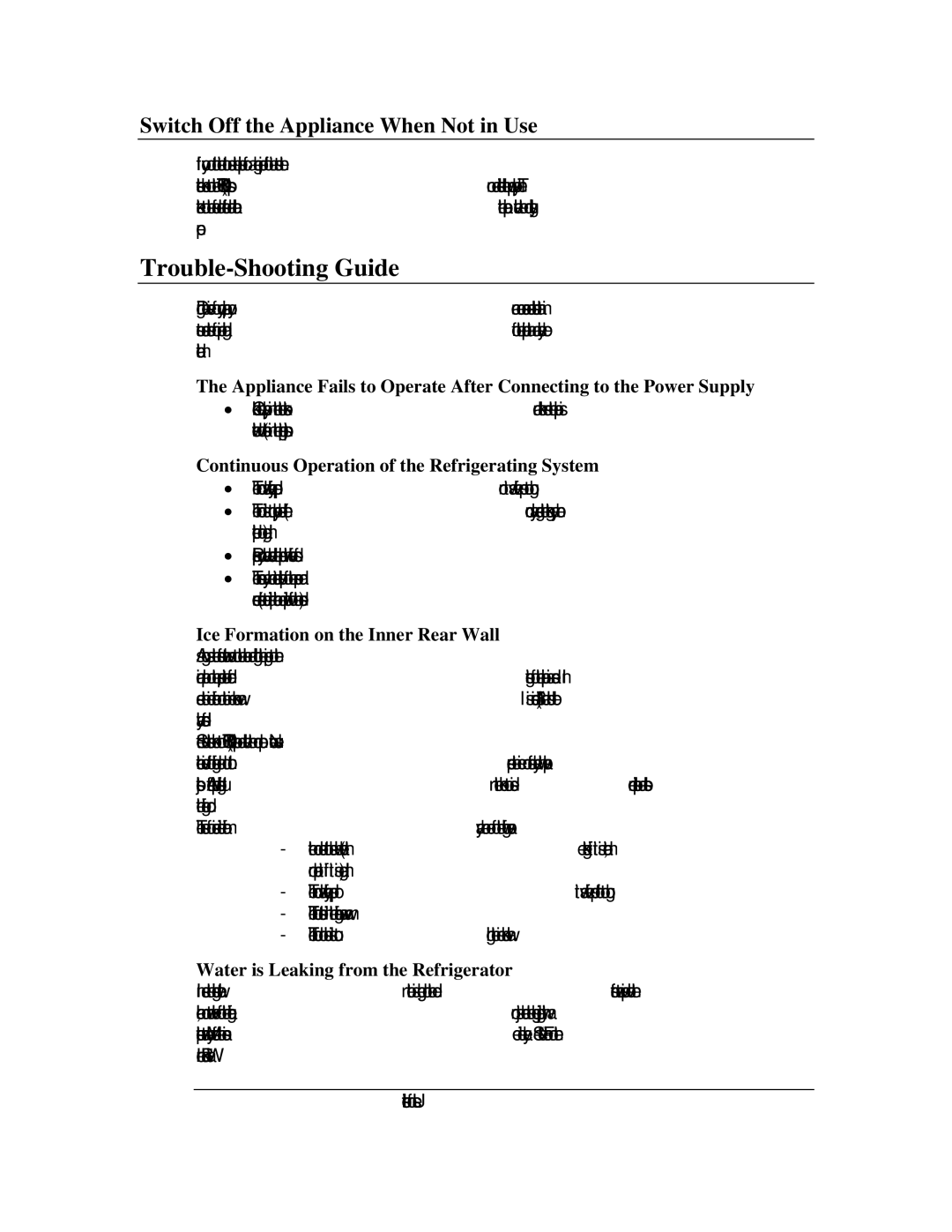
Commercially Frozen Foods
The storage time and the recommended temperature for storing commercially frozen foods are indicated on the packaging. For storing and using consider the manufacturer’s instructions. When shopping for foods, be careful to choose only adequately packed foods provided with complete data and stored in freezers where the temperature is not higher than
|
|
|
| Storage time (in months) |
|
| ||||||
Food | 1 | 2 | 3 | 4 | 5 | 6 | 7 | 8 | 9 | 10 | 11 | 12 |
Vegetable |
|
|
|
|
|
|
| + | + | + |
|
|
Fruit |
|
|
|
|
|
|
|
|
| + | + | + |
Bread, Pastries |
|
| + |
|
|
|
|
|
|
|
|
|
Milk |
|
| + |
|
|
|
|
|
|
|
|
|
|
| + |
|
|
|
|
|
|
|
|
| |
Beef |
|
|
|
|
|
|
|
|
| + | + | + |
Veal |
|
|
|
|
|
|
| + | + | + |
|
|
Pork |
|
|
| + | + | + |
|
|
|
|
|
|
Poultry |
|
|
|
|
|
|
| + | + | + |
|
|
Game |
|
|
|
|
| + | + | + |
|
|
|
|
Minced Meat |
|
|
| + |
|
|
|
|
|
|
|
|
Smoked Sausages | + |
|
|
|
|
|
|
|
|
|
|
|
Lean Fish |
|
| + |
|
|
|
|
|
|
|
|
|
Fat Fish | + |
|
|
|
|
|
|
|
|
|
|
|
Offal |
| + |
|
|
|
|
|
|
|
|
|
|
Defrosting Frozen Food
Partially thawed or defrosted foods should be used as soon as possible. Cold air preserves the food and does not does not destroy the microorganisms which rapidly activate after defrosting.
Partial defrosting reduces the nutritional value of foods, especially of fruits, vegetables and
Ice Making
The recommended thermostat setting for ice making is positioned between 3 and
5.Fill the ice cube tray (two thirds of it) with cold water or with any liquid suitable for freezing and insert the tray into the low temperature compartment. Dry the bottom of the tray so that it doesn’t stick to the bottom of the low temperature compartment. The best method to get the ice cubes out of the tray is to hold the tray under cold tap water for a second and turn it around and slightly bend it.
Instructions for Use
